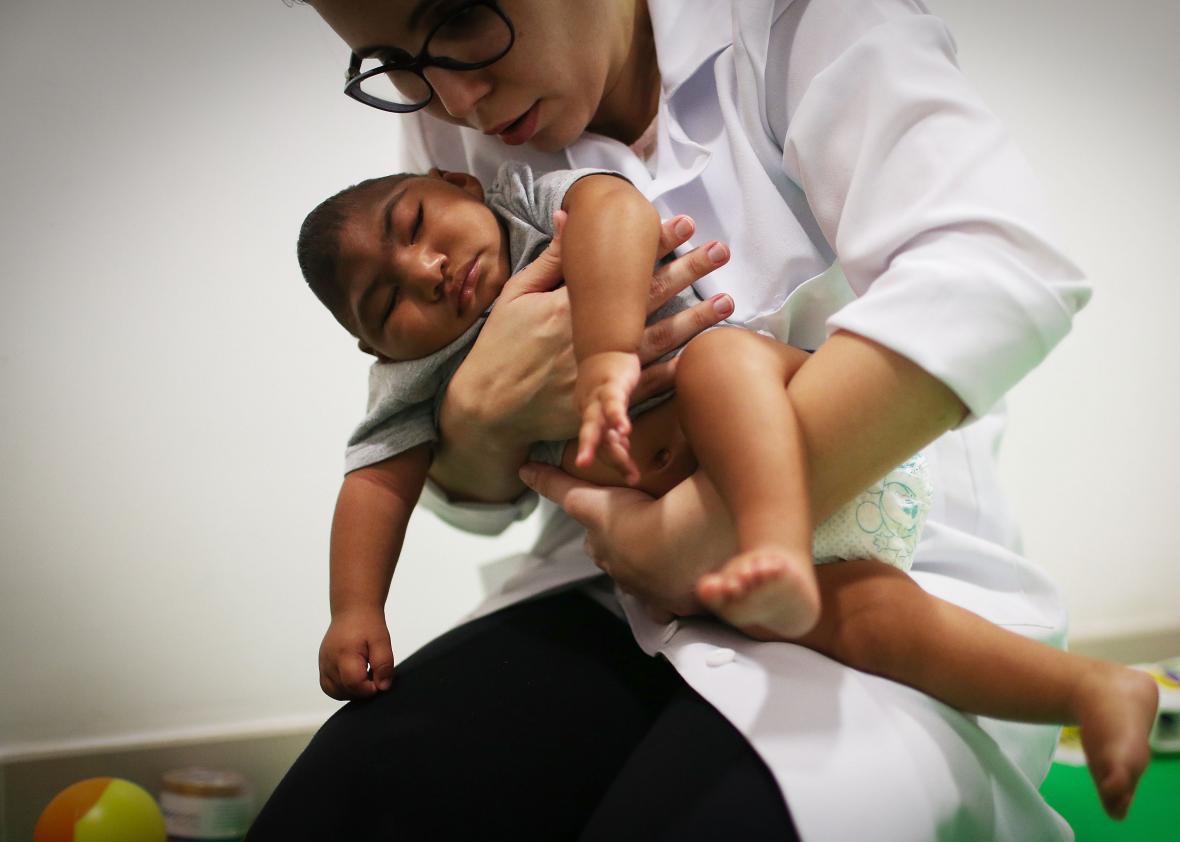For families in Zika-infected areas, the birth of an apparently healthy baby does not signal an end to worry, according to the latest scientific evidence from Brazil.
In a letter published in the New England Journal of Medicine in late August, Brazilian scientists described the case of an infant whose mother had developed symptoms associated with Zika at the 26th week of pregnancy—a point when the fetus is considered to have passed the most vulnerable stages of development, as Kaiser Health News reports. The child appeared neurologically normal with “no obvious illness,” the doctors write. But at 54 days, tests found Zika in his urine, saliva, and serum, and by the age of 6 months, he was exhibiting “neuropsychomotor developmental delay … with the right dominant side more severely affected.” This child’s case underscores what the researchers assembling a hasty scientific consensus around Zika had already begun to believe. As Martha Rac, a maternal-fetal medicine specialist at Texas Children’s Pavilion for Women and Baylor College of Medicine in Houston, told KHN: “The risk doesn’t disappear with delivery.”
The KHN story continues:
The report only describes one case, which limits what scientists can reasonably conclude. But it underscores a need for better counseling, more thorough monitoring of children who were potentially exposed and increased research on how Zika may affect children, doctors said. … In a clinical guidance published before the Brazil report, the Centers for Disease Control and Prevention called for regular assessments of children who may have been exposed in utero. Practically, that means tracking things like head size and how babies progress in terms of vision and hearing responses as well as their ability to feed.
Researchers are still learning about Zika, which is currently spreading in Florida and appears to have caused 16 cases of the birth defect microcephaly in the continental U.S. so far. This summer, the Centers for Disease Control and Prevention issued warnings that the virus may persist in semen for up to six months—more than twice as long as doctors initially believed—and that, since as few as 20 percent of infected people may display symptoms, all pregnant women in the U.S. should be tested for Zika. As Christine Curry, an assistant professor of obstetrics and gynecology at the University of Miami, wrote in August, “Physicians like me are learning about Zika along with our patients.” The best way to cope with this uncertainty, she wrote, is to “collect as much information as possible” through frequent ultrasounds and close communication between pregnant women and their doctors.
The latest evidence suggests that the same careful monitoring should extend into infancy for babies who may have been exposed to Zika. Unfortunately, women who face the highest risk may have the hardest time meeting that recommendation. Lower-income women, who are more likely to live in Zika-infected neighborhoods—and in houses where the windows stay open all summer in lieu of air conditioning—are less likely to have access to regular pediatric checkups. “Children are supposed to receive nine such visits in their first 15 months of life,” KHN points out. “But on average, about 40 percent of the children covered by Medicaid had fewer than six wellness visits in that timeframe, according to 2015 data from the U.S. Department of Health and Human Services.”
Florida has made test kits available free of charge to pregnant women across the state. But the funding to do something similar for at-risk newborns seems unlikely to be forthcoming. The CDC requested $1.9 billion to combat the problem last winter, and the emergency budget has been stalled in Congress ever since. Scientists get a better grasp on Zika every day—but when it comes to following their recommendations, as CDC Director Thomas Frieden said last week, “The cupboard is bare.”
